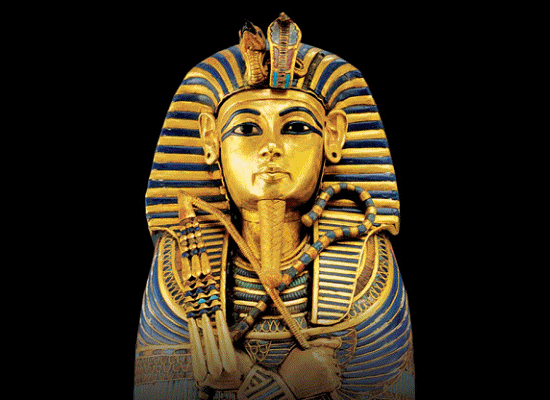TUTANKHAMUN
THE TREASURE OF PHARAOH IN PARIS |
|
| A beautiful exhibition awaits you at the Grande Halle de la Villette: it presents the treasure of Tutankhamun discovered intact in 1922 by a British archaeologist. No less than 150 exceptional pieces made the trip, of which sixty had never left Egypt.
Howard Carter found clues suggesting that Tutankhamun was buried in the Valley of the Kings. In 1922 he finally discovered the fabulous tomb of the young pharaoh, lost under the sands. He then described himself as "dumb with stupor, his hands trembling", lighting up with candle those jewels hidden from view for millennia. It is the only Egyptian royal tomb found intact, the others being abundantly looted over the centuries. A dazzling discovery: a plethora of furniture, clothes, jewels, objects Objects in a remarkable state of preservation, having slept for nearly three millennia underground. Tutankhamun, a young minor pharaoh who ruled for ten years around 1340 BC between the ages of nine and 19, was buried with the honors due to his rank, with all the objects that were to accompany him on his journey through the afterlife. And the visitor to cross the beyond also through the course of the exhibition. Large openings connect the rooms of the exhibition which symbolize the twelve doors that the deceased had to pass successively to reach the beyond. Threatened that he was by ferocious beasts or supernatural creatures ... A beautiful statuette of the sovereign, in gilded wood, shows him riding a black panther, divinity capable of protecting him in his nocturnal journey to the beyond. But the pharaoh also protected himself with weapons like the golden ceremonial club, boomerangs, or shields of carved wood. Tutankhamen also grabs a lion by the tail as a sign of power. What fascination in front of the two headrests, in blue faience, of the color of the sky which symbolized the magic rebirth in the afterlife. Or these wooden boxes inlaid with ebony and ivory then containing the clothes of the pharaoh. And the large, gilded, real-sized statue - the only obsidian-eyed one of the guardian - marks the transition to rebirth in the afterlife. The mummy of Tutankhamun, remained in the tomb. She lodged in a succession of coffins nested inside one another. We discover a series of ornaments, amulets and jewels, gold bands encrusted with stones and faience ... He reigned more than three thousand years ago on the most powerful civilization around the Mediterranean. We fall in love with these 150 Wonders of Tutankhamun's Treasure - out of 5000 pieces extracted by the team of the British archaeologist! That we are less convinced by this rather grandiloquent staging - videos, music, enlargements of images - organized by an American team that organizes a world tour in ten cities. One of the key pieces, however, is missing. Since his visit to France in 1967 during the "exhibition of the century", the funerary mask, symbol of the treasure of the pharaoh, is now forbidden to leave the Egyptian borders. "Tutankhamun, the treasure of the pharaoh", until September 15, Grande Halle de la Villette, 10 am to 8 pm every day, rates 18-24 €, www.expo-toutankhamon.fr. To read: "The fabulous discovery of the tomb of Tutankhamun", Howard Carter (Libretto, € 8) and "Tutankhamun" Zahi Hawass (Citadels & Mazenod, € 49). |
|
| Kate White for DayNewsWorld | |
 |
|




